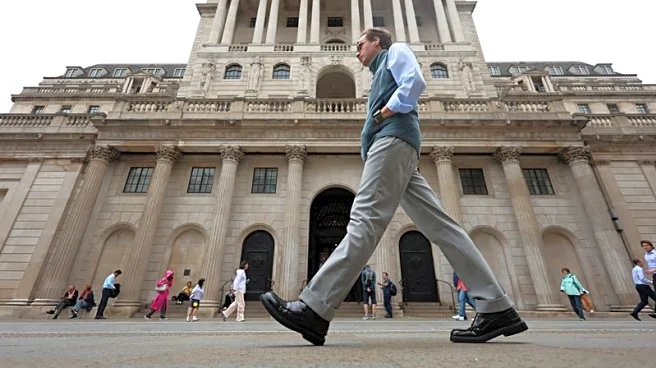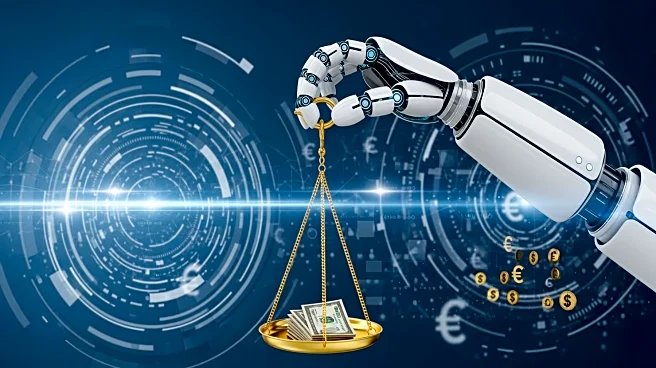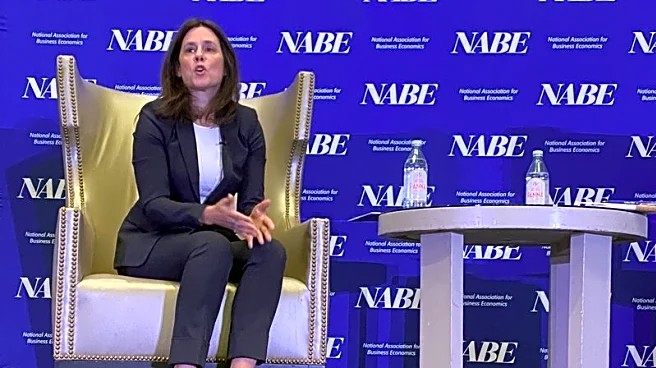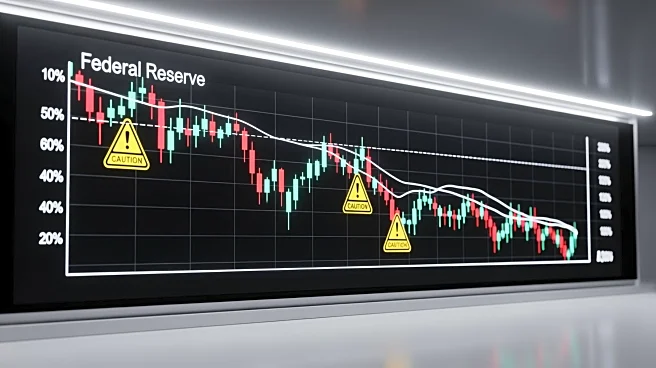What's Happening?
Since the launch of ChatGPT in November 2022, the U.S. economy has experienced a significant divergence between job openings and stock market performance. Job openings have decreased by approximately 30%, while the S&P 500 has surged by 70%. This unusual
trend has been attributed to the Federal Reserve's monetary policy rather than the impact of artificial intelligence. The Fed's interest rate hikes, which began in March 2022, aimed to cool an overheating economy and control inflation, have led to reduced investment and hiring. Additionally, trade policies and immigration enforcement have further constrained job creation. Despite the decline in job openings, AI-related stocks have driven significant gains in the stock market, contributing to wealth increases for U.S. households.
Why It's Important?
The divergence between job openings and stock market performance highlights the complex interplay between monetary policy and economic indicators. While AI is often blamed for job market disruptions, the Federal Reserve's interest rate hikes have played a more significant role in reducing job openings. This situation underscores the importance of understanding the broader economic context when analyzing labor market trends. The concentration of stock market gains in a few AI-related companies raises concerns about potential market bubbles. The impact of these developments on different sectors and demographic groups, particularly young workers, emphasizes the need for careful policy considerations to balance economic growth and employment stability.
What's Next?
As the Federal Reserve continues to adjust its monetary policy, the future trajectory of job openings and stock market performance remains uncertain. Potential rate cuts may aim to stimulate the labor market and prevent rising unemployment. Policymakers and economic stakeholders will need to monitor the effects of AI and other technological advancements on employment and economic growth. The ongoing debate about the role of AI in the economy will likely influence future policy decisions and investment strategies.
Beyond the Headlines
The current economic situation reflects a broader trend of two distinct economies: a booming AI-driven market and a sluggish broader economy. This dichotomy raises questions about the sustainability of growth driven by a few tech giants and the potential long-term implications for economic inequality. The role of government policies, such as trade and immigration, in shaping labor market dynamics also warrants further examination. Understanding these underlying forces is crucial for developing strategies to ensure inclusive and sustainable economic growth.














